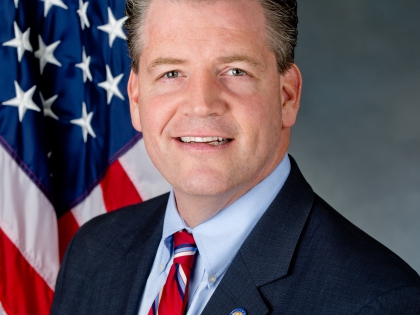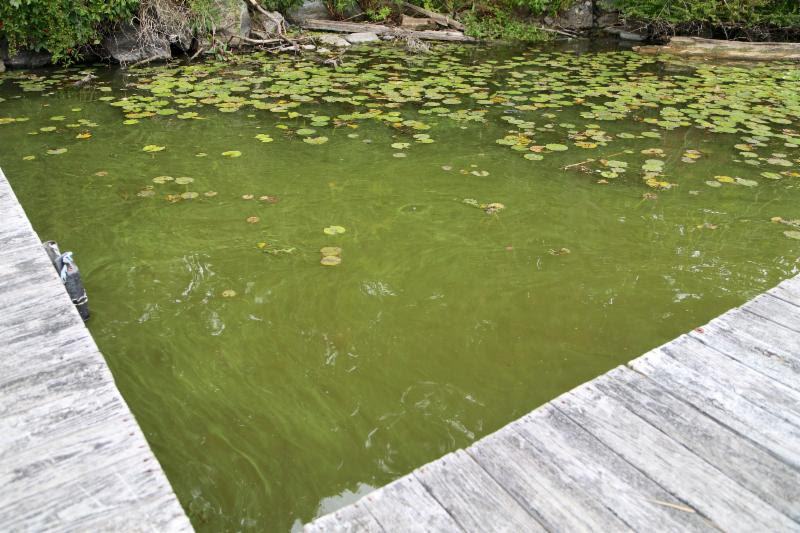
Senator Murphy Joins Governor in Addressing Harmful Algal Bloom
February 14, 2018
-
ISSUE:
- blue-green algae
- Harmful Algal Bloom
- Jefferson Valley
- Westchester County
- environmental preservation

JEFFERSON VALLEY, NY - Senator Terrence Murphy today joined Governor Andrew M. Cuomo as he announced the dates and locations of four summits supporting the state's comprehensive effort to protect vulnerable lakes and waterbodies in Upstate New York from harmful algal blooms, including one in the Mid-Hudson Region on February 27. Senator Murphy recently introduced legislation, which builds on the successful model of the State's invasive species program to combat harmful algal blooms.
"My district is home to the ponds and lakes most affected by harmful algal blooms and hypoxia," Senator Murphy said. "When the reservoir that provides drinking water for New York City turns green for three weeks a year, you know you have a problem. As the author of legislation to create a mechanism whereby the state can study, respond to, and mitigate harmful algal blooms, I look forward to working with the Governor on this regional initiative to engage water quality experts who will help craft solutions to protect our water."
"Protecting water quality is a top priority and New York is committed to addressing growing threats like harmful algal blooms," Governor Cuomo said. "These summits are bringing experts from across the country and New York leaders together with local authorities to develop new and innovative strategies to safeguard our water for future generations."

The regional summits are part of the $65 million four-point initiative unveiled in the Governor's 2018 State of the State to aggressively combat harmful algal blooms in Upstate New York. The first of the summits will be held at 6pm on Tuesday, February 27, at SUNY New Platz in the Multi-Purpose Room.
Murphy's legislation would establish a multi-agency emergency response team that can be deployed in the event of a suspected contamination of a potable water source by harmful algal bloom; would add the detection and monitoring of harmful algal blooms within the state's coastal and inland waterway policies; would allows soil and water districts to undertake a program for the monitoring and response to harmful algal blooms; would create a harmful algal bloom and hypoxia commission and advisory committee to perform regional assessments; and would require Cornell to complete a peer-reviewed study of harmful algal blooms prior to the adoption of any regulations. It would be the first state program dealing with harmful algal blooms in the nation.
As part of his 2018 State of the State announcements, the Governor directed the state's Water Quality Rapid Response Team, co-chaired by Department of Environmental Conservation Commissioner Basil Seggos and Department of Health Commissioner Howard Zucker in partnership with the New York State Department of Agriculture and Markets, to convene the four regional Harmful Algal Blooms summits. The summits will bring together national and state experts, including scientists from Kansas, Ohio, Tennessee and Vermont, as well as SUNY College of Environmental Science and Forestry, Cornell University, the New York State Soil and Water Conservation Committee, and local stakeholders.
At the summits, nation-leading experts will work with local steering committees to begin development of tailored action plans to address the causes of algal blooms in the twelve priority waterbodies across the state. The action plans developed for each waterbody will be used to guide the development and implementation of priority projects, including new monitoring and treatment technologies. The action plans will be complete by the end of May and the lessons learned through these action plans will be applied to other impacted waterbodies.
The state's panel of national Harmful Algal Blooms experts includes:
- Greg Boyer, Professor, SUNY College of Environmental Science and Forestry
- Karl Czymmeck, Senior Extension Associate, Cornell University Department of Animal Science
- Tim Davis, Associate Professor, Bowling Greene State University, Ohio
- Art DeGaetano, Professor, Department of Earth and Atmospheric Sciences, Cornell University
- Sally Flis, Director, Agronomy, The Fertilizer Institute
- Jennifer Graham, Research Hydrologist, USGS Kansas Water Science Center
- Nelson Hairston, Frank H. T. Rhodes Professor of Environmental Science, Cornell University
- Dave Matthews, Director, Upstate Freshwater Institute
- Tim Mihuc, Professor of Environmental Science, SUNY Plattsburgh
- Hans Paerl, Professor, University of North Carolina
- Heather Raymond, Program Coordinator, Ohio Environmental Protection Agency
- Angela Shambaugh, Aquatic Biologist, Vermont Department of Environmental Conservation
- Dr. Steve Souza, Founder, Princeton Hydro LLC
- Dr. Harold W. Walker, co-director of the New York State Center for Clean Water Technology, SUNY Stony Brook
- Judy Westrick, Director of the Lumigen Instrument Facility, Wayne State University
- Steve Willhelm, Professor, Department of Microbiology and Center for Environmental Biotechnology, University of Tennessee
DEC Commissioner Basil Seggos said, "At Governor Cuomo's direction, DEC scientists and water quality experts are actively investigating the causes of algal blooms and pioneering new and innovative solutions to address the challenge these blooms pose across the state. With the launch of these regional summits, DEC will work with national experts, our state agency partners and local leaders, to prioritize actions necessary to protect New York's vital water resources."
Health Commissioner Dr. Howard Zucker said, "Protecting New York's drinking water from harmful algal blooms continues to be a top priority for Governor Cuomo. The Department of Health's scientists have been actively testing blooms and monitoring waters statewide. These summits are an important opportunity for these scientists to work with regional and national experts to hone best practices and reinforce the state's robust response protocol which is designed to stay ahead of this environmental threat to public health."
State Agriculture Commissioner Richard A. Ball said, "Investing in the protection of our state's lakes and waterways now will ensure our precious natural resources remain viable for our future generations. With the Governor's focus on water quality and environmental sustainability, these summits will help New York State better assess the challenges faced from algal blooms and create a blueprint to move us forward."
The four evening sessions will also be available live online. Please visit Livestream to learn the many ways in which these events can be watched in real time including a desktop browser, mobile browser, free livestream mobile app, and others.
Governor Cuomo's Harmful Algal Blooms program builds on the State's $2.5 billion Clean Water Infrastructure Act investments in clean water infrastructure and water quality protection throughout New York State. The Harmful Algal Blooms initiative will be supported with funds from both the Clean Water Infrastructure Act and the Environmental Protection Fund
Share this Article or Press Release
Newsroom
Go to NewsroomMurphy secures $705K for two local school districts
August 1, 2016
Murphy partners with Croton to shed their meds
July 27, 2016